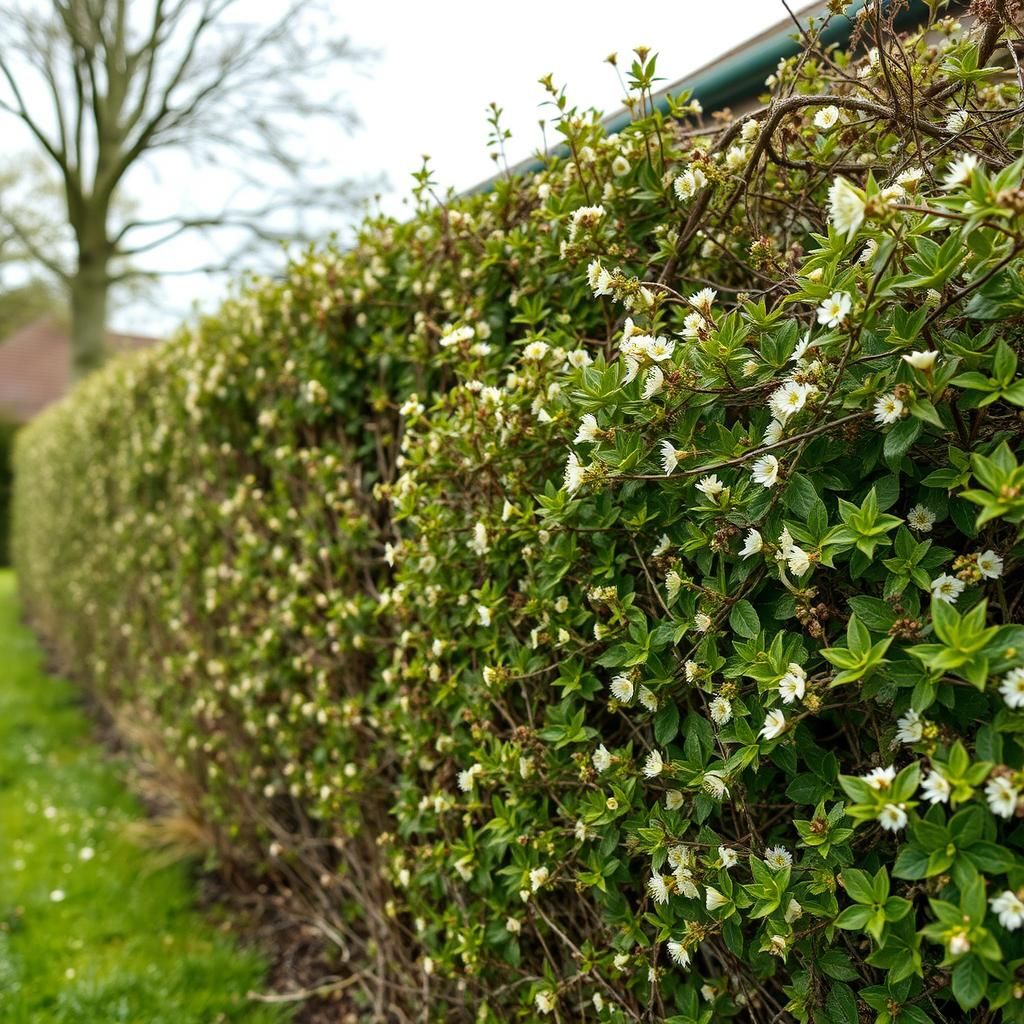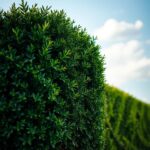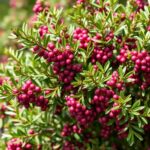Why is my hawthorn hedge dying? Common Causes and Solutions Explained

Hawthorn hedges are a popular choice for gardeners seeking to create privacy or enhance their landscapes. However, when these vibrant plants begin to show signs of distress or appear to be dying, it can be concerning for any homeowner. Understanding the common causes of hawthorn hedge decline is crucial for effective management and restoration. In this article, we will explore the factors that contribute to the deterioration of hawthorn hedges, including environmental stressors, pests, and diseases. Additionally, we will provide practical solutions to help revive your hedge and ensure it thrives for years to come.
Why is My Hawthorn Hedge Dying?
Hawthorn hedges can die for a variety of reasons, including environmental stress, pests, and diseases. One common cause is poor soil drainage, which can lead to root rot and other fungal diseases that hinder the plant's ability to absorb water and nutrients. Additionally, if the hedge is exposed to extreme temperatures or inadequate sunlight, it may suffer from stress that weakens its overall health. Regular maintenance, including appropriate watering, fertilization, and pruning, is essential to keep hawthorn hedges vibrant and thriving.
Pests Affecting Hawthorn Hedges
Pests such as aphids, leaf miners, and spider mites can inflict significant damage to hawthorn hedges. Aphids, for instance, feed on the sap of the plant, leading to curling leaves and stunted growth. In severe cases, infestations can weaken the plant, making it susceptible to diseases. Regular inspection and the use of organic insecticides can help manage these pest populations effectively.
Common Diseases in Hawthorn Hedges
Hawthorn hedges are susceptible to several diseases, including fire blight and powdery mildew. Fire blight is a bacterial disease that can cause wilting and blackened branches, while powdery mildew appears as a white fungal coating on leaves, resulting in photosynthesis disruption. Early identification and treatment, using appropriate fungicides or removing affected areas, are crucial for disease control.
Environmental Stress Factors
Environmental stress factors like drought, excessive heat, or waterlogging can severely affect the health of hawthorn hedges. Drought reduces the amount of moisture available for absorption, while excessive water can suffocate roots and lead to rot. Understanding the specific needs of your hedge, including appropriate watering schedules and protection from harsh weather, is essential for maintaining its health.
See also:
Soil Quality and Drainage Issues
The quality of soil and its drainage capability play a significant role in the vitality of hawthorn hedges. Poor drainage can lead to waterlogged roots, whereas compacted soil can inhibit root growth. Performing soil tests to assess pH and nutrient levels, along with amending the soil as necessary, can improve conditions for your hawthorn hedge significantly.
Importance of Pruning and Maintenance
Regular pruning and maintenance are critical for the health of your hawthorn hedge. Neglecting these tasks can lead to overcrowded branches that compete for resources, ultimately weakening the plant. Timely pruning helps promote air circulation and sunlight penetration, reducing the risk of diseases and encouraging healthy growth.
| Factor | Description |
|---|---|
| Pests | Insects like aphids weaken the plant by feeding on sap. |
| Diseases | Bacterial and fungal diseases can damage leaves and branches. |
| Stress | Environmental factors such as drought affect plant health. |
| Soil | Poor soil quality and drainage lead to root issues. |
| Maintenance | Regular pruning is essential to encourage healthy growth. |
Identifying Underlying Issues in Your Hawthorn Hedge
Several factors can contribute to a declining hawthorn hedge, often reflecting a combination of environmental stressors and care practices. Issues such as poor soil drainage, insufficient sunlight, or pest infestations may lead to weakened plants, resulting in yellowing leaves, stunted growth, or dieback of branches. Understanding the specific symptoms displayed by your hawthorn hedge is crucial as it allows you to accurately diagnose these problems and apply appropriate remedies. Furthermore, frequent observation and timely intervention can help revitalize a struggling hedge, promoting a healthier and more resilient landscape.
Pest Infestations Affecting Hawthorn Hedges
Pests can significantly impact the health of hawthorn hedges, with common culprits including aphids, spider mites, and scale insects. These pests extract sap from the leaves and branches, leading to stunted growth and overall decline. Infestations can also encourage the development of fungal diseases, which further stress the plants. Regular monitoring and appropriate pest control methods, such as insecticidal soaps or natural predators, are essential steps in managing these threats and maintaining the vitality of your hedge.
Environmental Stress and Its Impact
Environmental stressors, including extreme temperatures, drought conditions, or excessive rainfall, can adversely affect hawthorn hedges. For example, prolonged drought can lead to dehydration and encourage root rot if the soil becomes too compacted and waterlogged after heavy rains. Adapting your watering and mulching practices based on current weather conditions can help mitigate these environmental effects and support the hedge's recovery and growth.
See also:
Soil Quality and Nutrient Deficiencies
The quality of the soil in which your hawthorn hedge is planted plays a pivotal role in its health. Nutrient deficiencies, particularly in nitrogen, phosphorus, or potassium, can lead to poor growth and leaf discoloration. Conducting a soil test can reveal these deficiencies, allowing for targeted amendments, such as organic fertilizers, to enhance soil health and provide essential nutrients. Additionally, improving soil structure through organic matter can significantly boost the overall growth of your hedge.
Pruning Practices and Their Effects
Improper pruning can lead to a variety of issues in hawthorn hedges, including increased susceptibility to pests and diseases. Over-pruning or neglect in pruning can result in an unbalanced shrub that struggles to thrive. Understanding the proper techniques, such as when to prune and how much to remove, is vital for maintaining the health and shape of your hedge. Ideal pruning typically involves removing dead or diseased wood while encouraging new growth, ensuring adequate light penetration throughout the plant.
Root Issues: Compaction and Disease
Root problems, whether from compaction or disease, can severely hinder the growth of hawthorn hedges. Compacted soil limits root expansion and inhibits water and nutrient uptake, leading to overall plant stress. Additionally, conditions like root rot, often caused by poor drainage, can kill roots and severely affect plant health. Addressing soil compaction through aeration and ensuring proper drainage are crucial steps in promoting root vitality and encouraging your hedge to flourish.
Questions from Our Readers
Why is my hawthorn hedge turning yellow?
The yellowing of your hawthorn hedge could be due to nutrient deficiencies, particularly a lack of nitrogen. This can affect the plant's overall health and vitality, leading to discoloration. Additionally, overwatering or poor drainage can stress the roots, causing similar symptoms. To address this issue, consider conducting a soil test and applying the appropriate fertilizers.
What pests could be harming my hawthorn hedge?
Several pests can negatively impact your hawthorn hedge, including aphids, spider mites, and scale insects. These pests feed on the sap of the plant, which can weaken it and lead to leaf drop and stunted growth. Regular inspection and the use of insecticidal soap or natural predators can help manage these infestations.
See also:
How can I tell if my hawthorn hedge is suffering from disease?
Signs of disease in your hawthorn hedge include wilting leaves, black spots, and fungal growth on stems. Powdery mildew and leaf spot diseases are common issues. If you notice these symptoms, it’s crucial to prune affected areas and apply appropriate fungicides to prevent further spread.
Is my hawthorn hedge getting too much or too little water?
Improper watering can lead to issues for your hawthorn hedge. If the leaves are turning brown and crispy, it may be receiving too little water. Conversely, if you notice root rot or yellowing leaves, this could indicate overwatering. Assessing the soil moisture regularly will help you determine the right watering schedule for your hedge.

If you want to read more articles like Why is my hawthorn hedge dying? Common Causes and Solutions Explained, we recommend you check out our Hedges category.
Leave a Reply
Related Articles